“The performance’s main focus is not about the individual conception of it by the artist, but about the fusion and involvement between the people in the artistic world and those you may encounter on the street, who are part of the common and daily life.” With these words, Italian artist Michelangelo Pistoletto addressed one of the main tenets of his recurring Walking Sculpture performance, the latest of which was organized by Magazzino Italian Art on November 4, 2017, down the streets of Cold Spring, New York.
This Cold Spring rendition was a re-enactment of the artist’s original 1967 performance, which took place in Turin, Italy. The main protagonist of the 2017 performance was one of his signature pieces, Sfera di giornali (Newspaper Sphere), which he rolled down the streets of the historic Hudson Valley town, beckoning the participation of the whole community.
A new version of the Sfera di giornali was created for this occasion out of pages of the three American newspapers which announced the birth of Magazzino for the first time in the fall of 2016: The Highlands Current, The New York Times, and The Putnam County News and Recorder. The Sfera has been graciously donated by the artist to Magazzino Italian Art, becoming part of its permanent collection.
Starting from the iconic town gazebo, located on the Hudson River waterfront, Pistoletto rolled the Sfera along a portion of Main Street, engaging the people in an act of ‘demopraxia’, a term coined by the artist to define the doing of a communal act.
As the maestro declared: “There are two ways in which to enjoy this event: contemplate the images through the times' records, or live it directly and personally by creating a real experience. There is a ritual in this performance: that of the artwork that derives from the sacred place of art in order to activate itself in the heart of society. In order to better understand this piece, we can refer to the famous Fontana by Marcel Duchamp. The artist introduces a urinal, a common object, into the temple of art, making it artistically sacred. Sfera di giornali is a work that comes out of the temple—from the artist’s studio, the gallery, or the museum—in order to enter into the dimension of common things which are part of human society; this is what is achieved each time the performance is completed.”
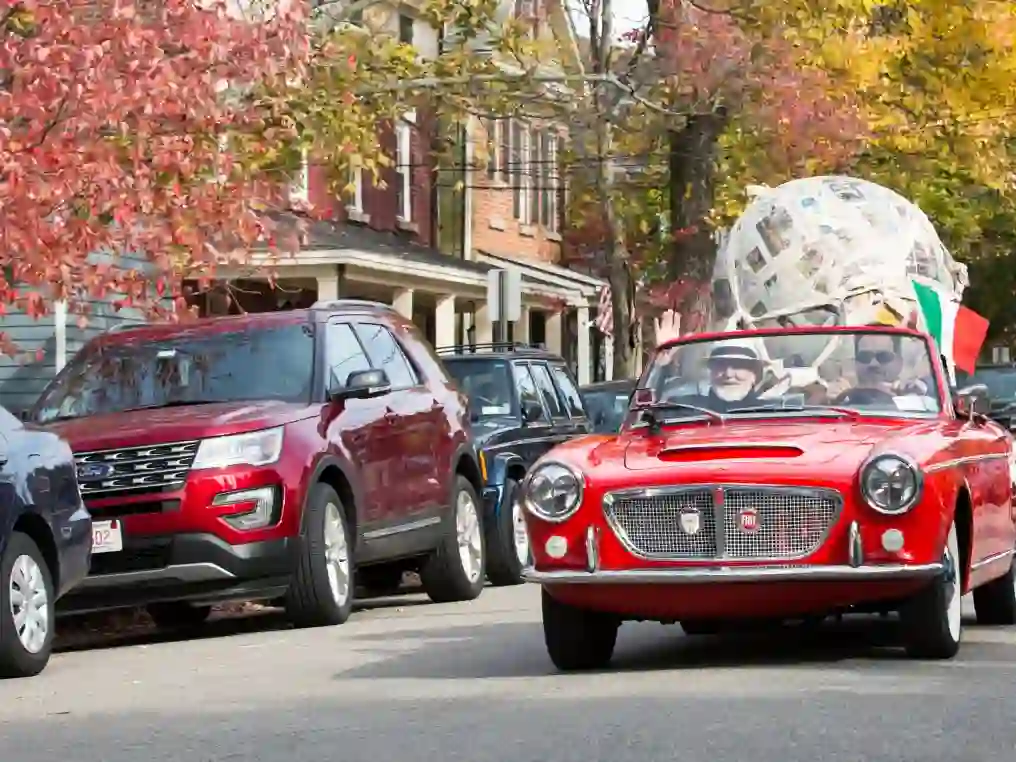
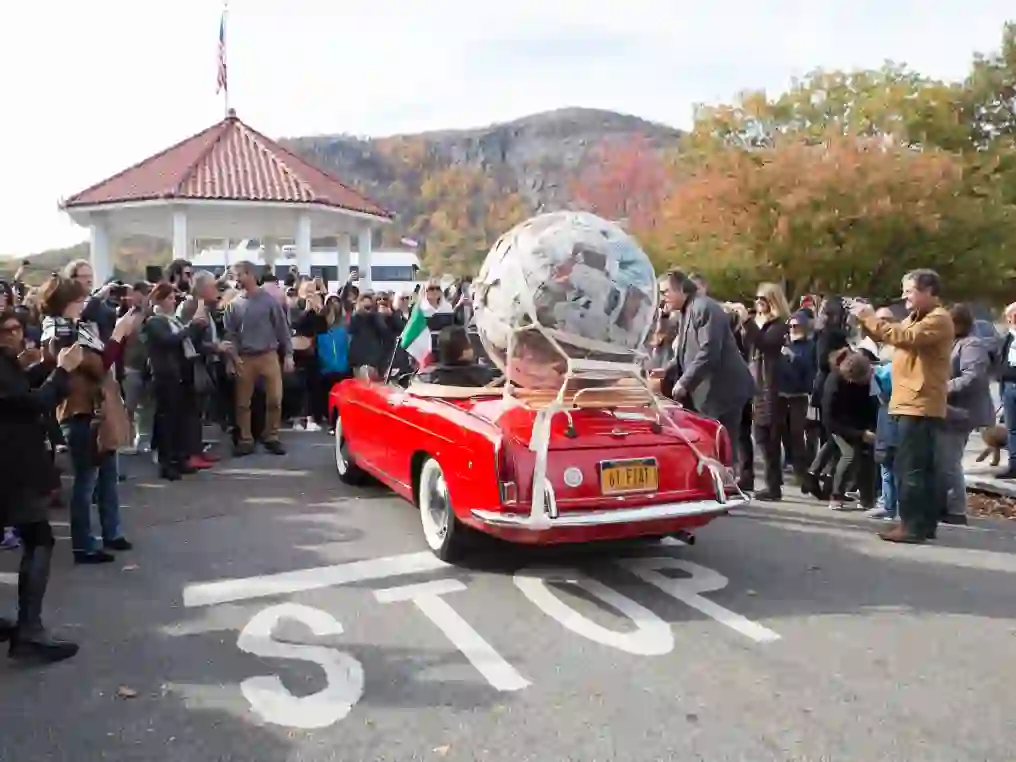
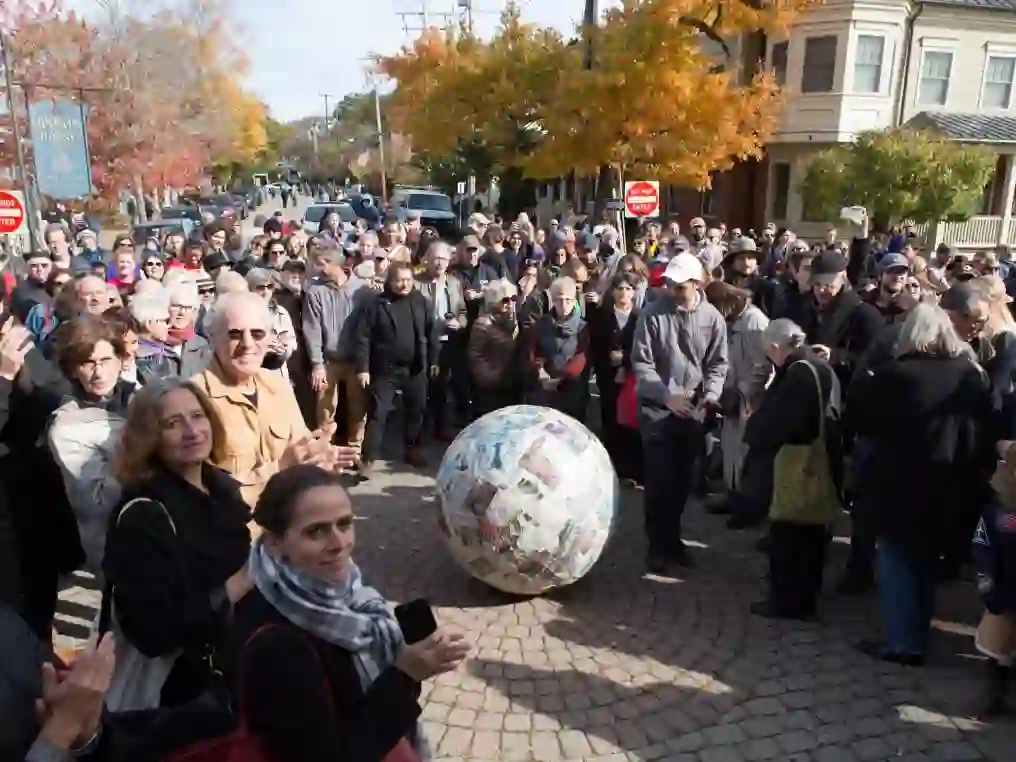
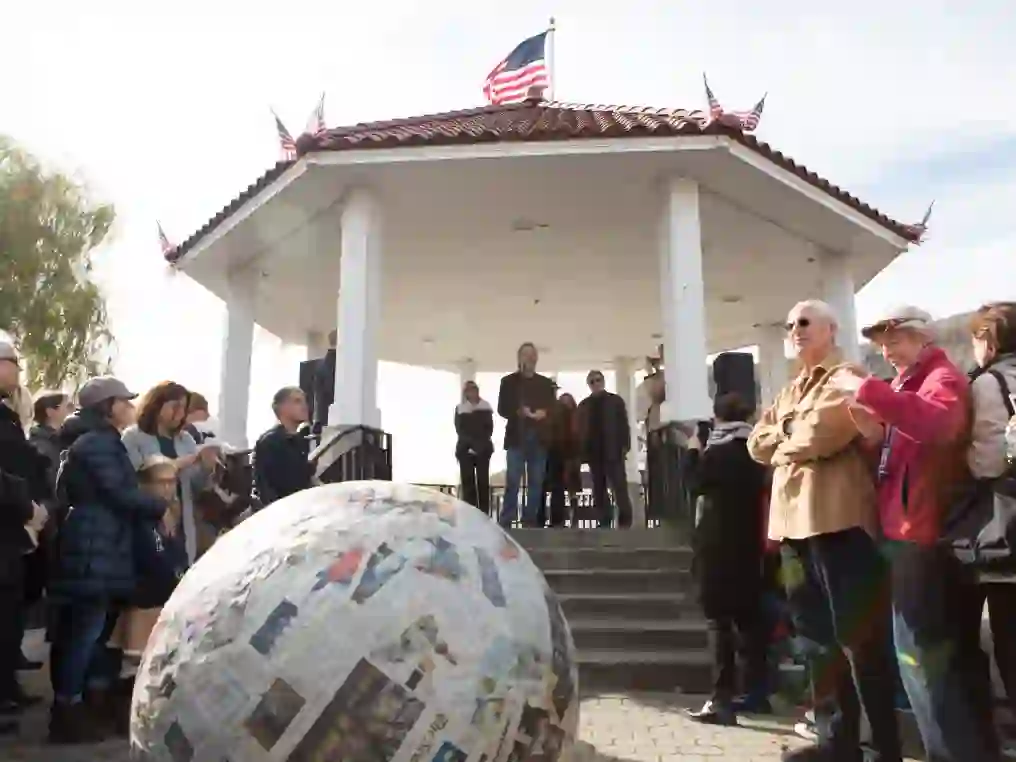
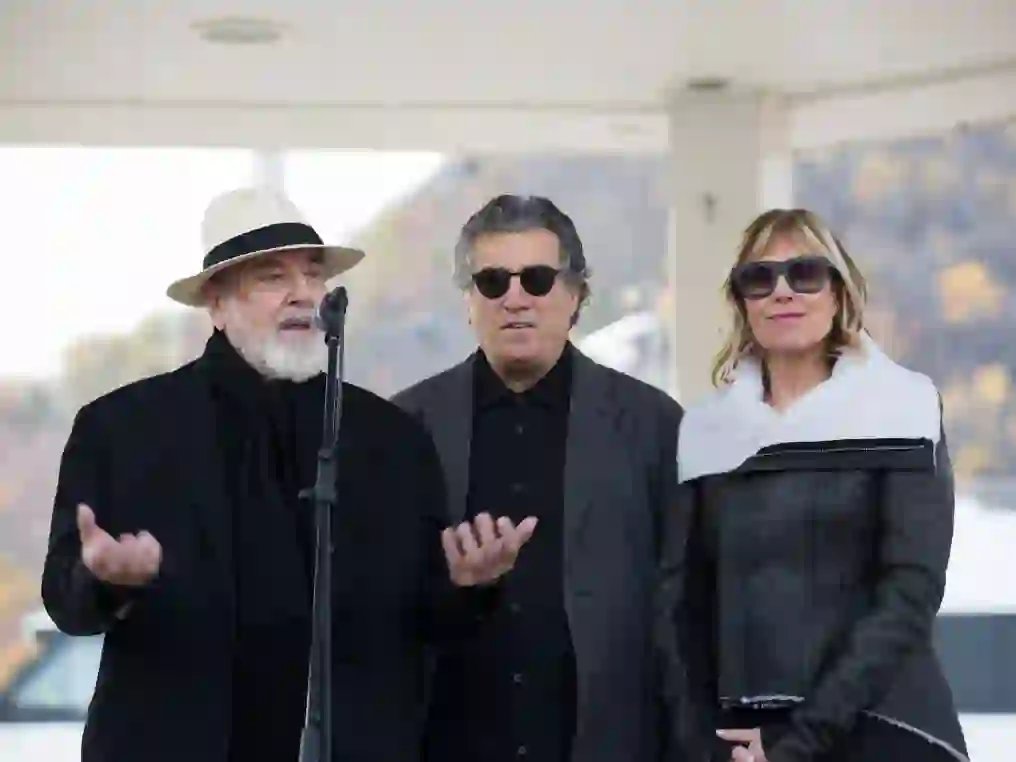



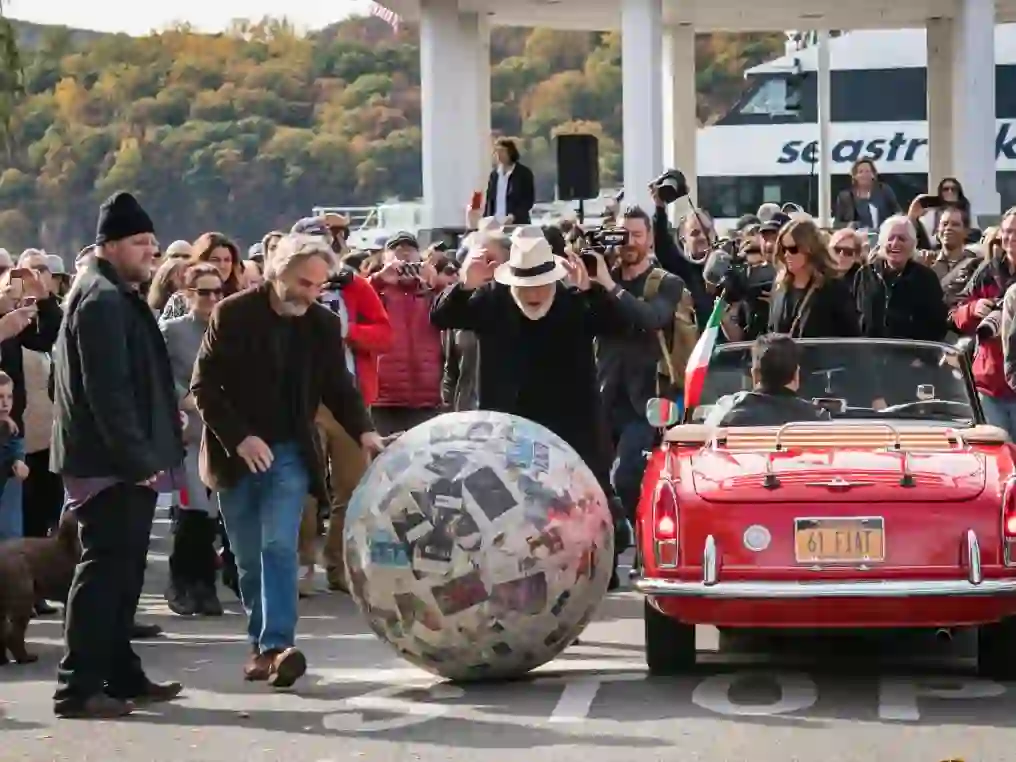
About Michelangelo Pistoletto’s Walking Sculpture
Pistoletto’s Sfere di giornali (Newspaper Spheres) were first conceived and executed between 1965 and 1968. These were the years in which the artist created his Oggetti in meno, or Minus Objects; these works signified not a rejection of form, but rather the form brought to life. The Sfera di giornali conceived in 1966 was rolled out onto the streets of Turin in December 1967 and became the historical performance piece known as Scultura da passeggio. During this performance, the Sfera, after riding on Pistoletto’s red Fiat convertible, crossed Piazza San Carlo and was rolled from Galleria Christian Stein to Galleria Sperone, where it would remain for the duration of Pistoletto’s exhibition at that time. The newspapers with which the artist formed the sphere reflected pressing contemporary news stories, bringing attention to the turmoil that plagued Italy in the late sixties. Spheres faithfully evoke the concept of circulation, pairing nicely with the literal imagery of newspapers, which circulate information. The significances of the rolling newspapers are manifold; the three principal ideas that Pistoletto wants to convey are an all-encompassing expression of circulation, a manipulation of the passage of time, and the way in which art confronts people every day and brings joy to human life.
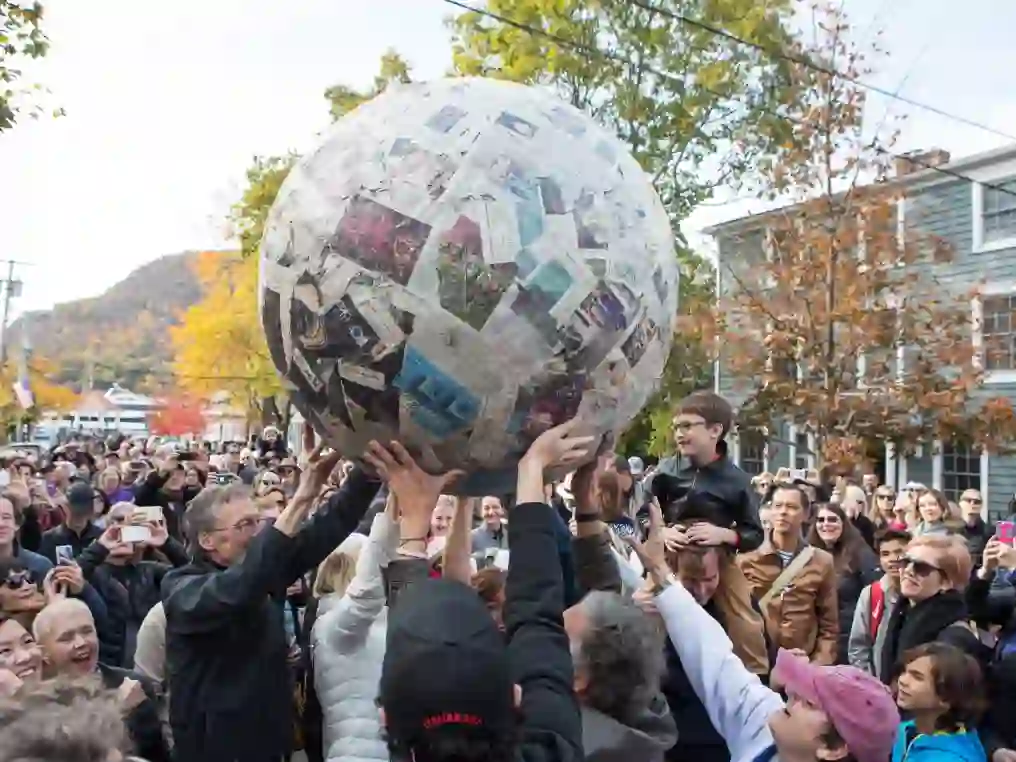
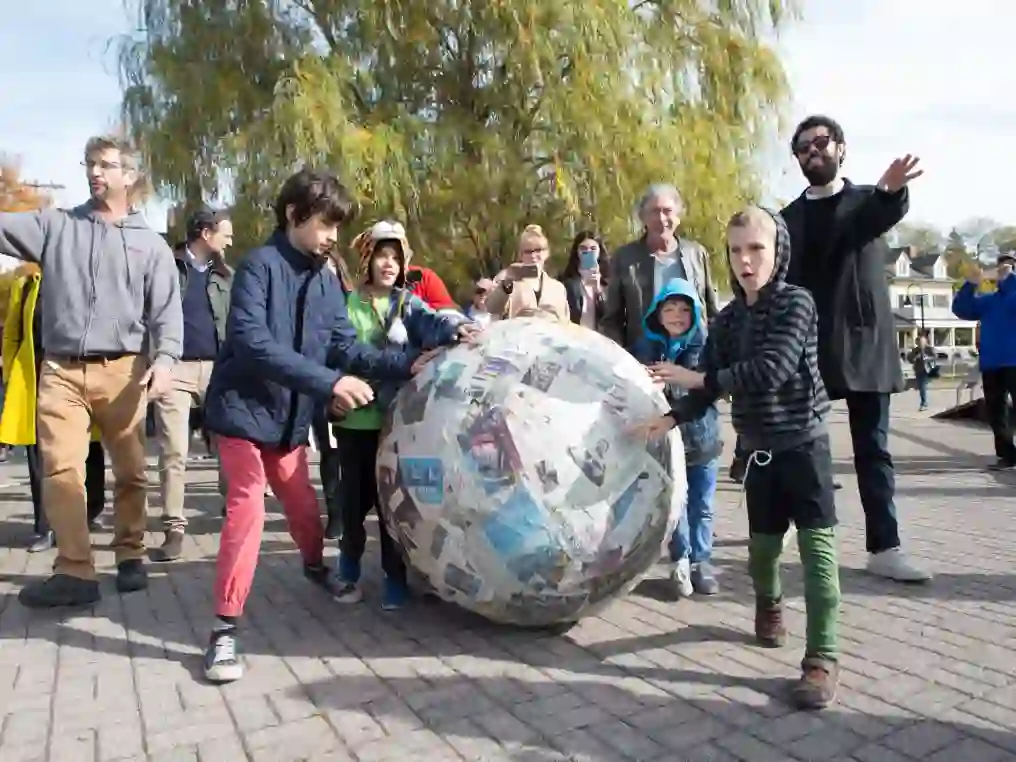
The performance has been repeated many times over the course of the last fifty years including at the Tate Modern in London (2009), the Philadelphia Museum of Art (2010), the Louvre Museum in Paris (2013), the Leila Heller Gallery in Dubai (2016), and at the Museo Nacional de Bellas Artes in Havana (2016).
In the Cold Spring performance, Sfera di giornali acknowledged not only the existence of Magazzino Italian Art, but also the vision of the local community, which welcomed the art warehouse as part of its cultural landscape. The circularity of the sphere and its itinerary on the streets of Cold Spring celebrated the encounter between the American and Italian cultural traditions. With this performance, an iconic Italian art movement synergizes with the natural beauty of the Hudson Valley, as well as its historic and artistic landmarks, like the United States Military Academy at West Point and the Hudson River School of Painting.
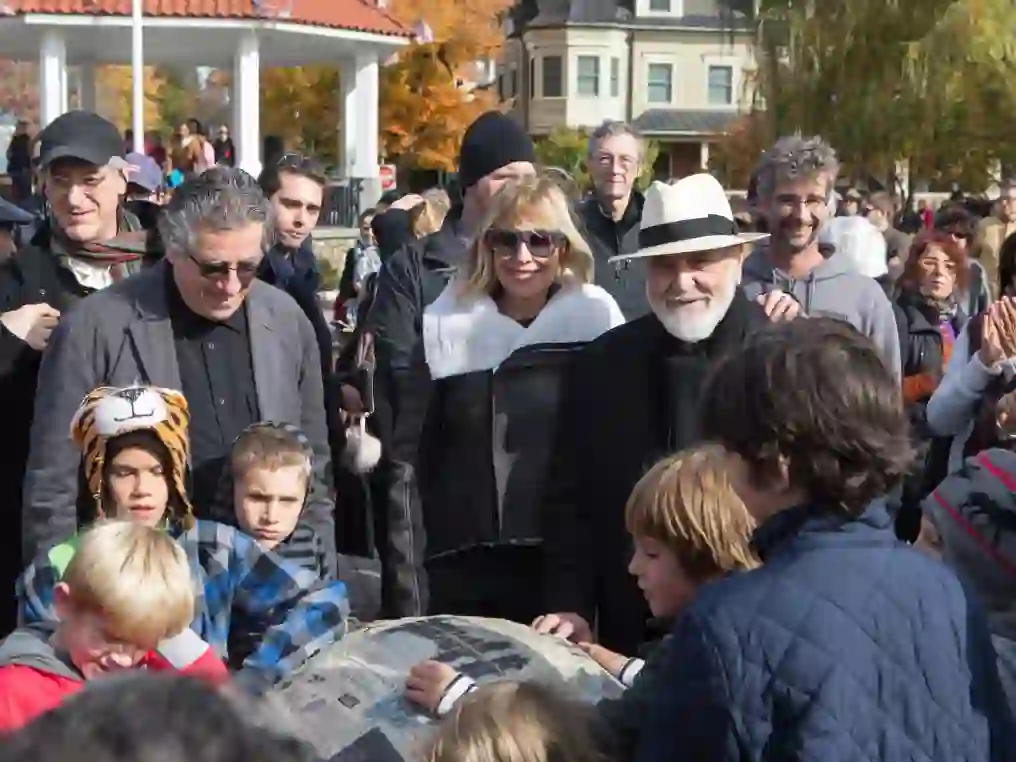
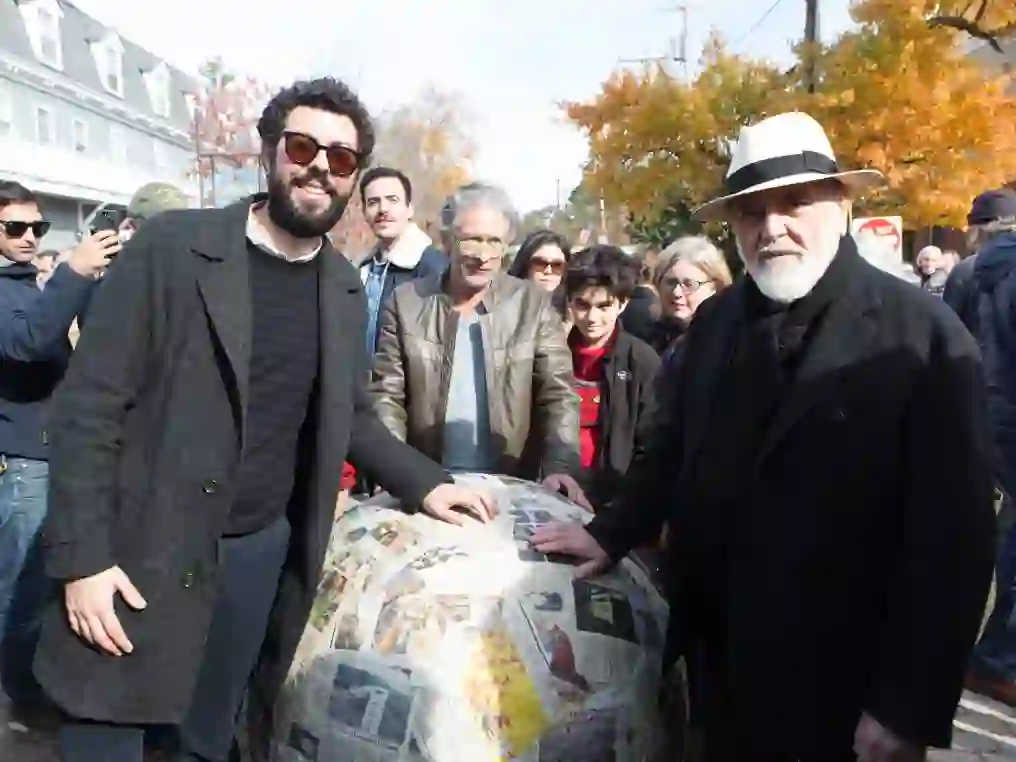
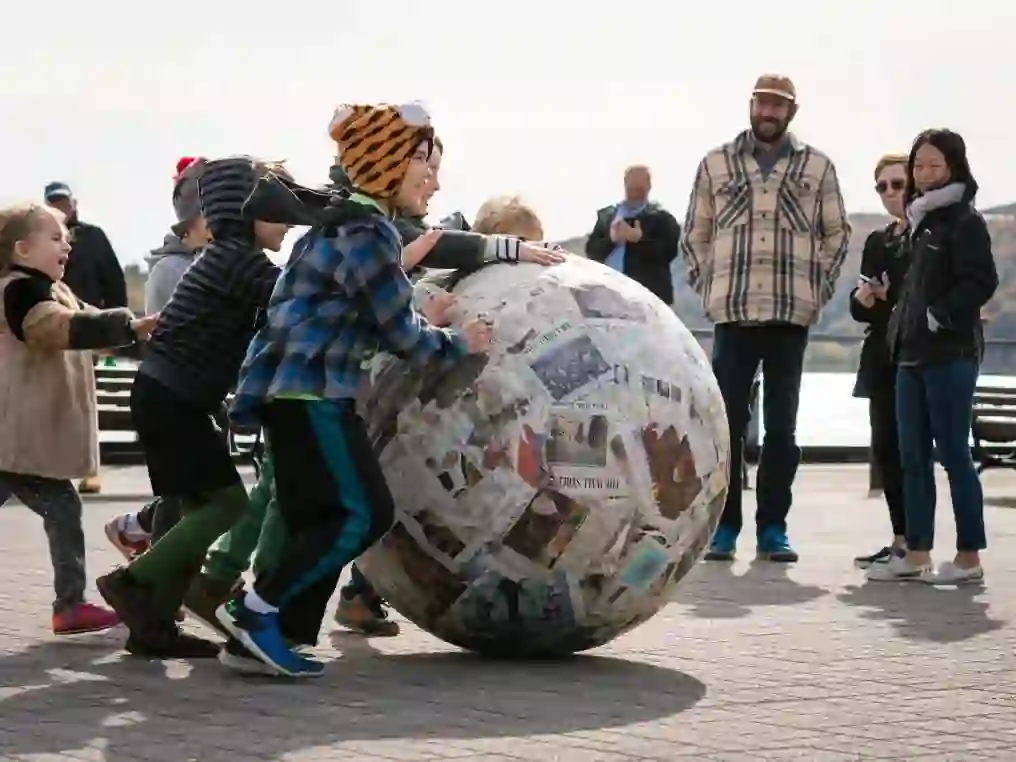
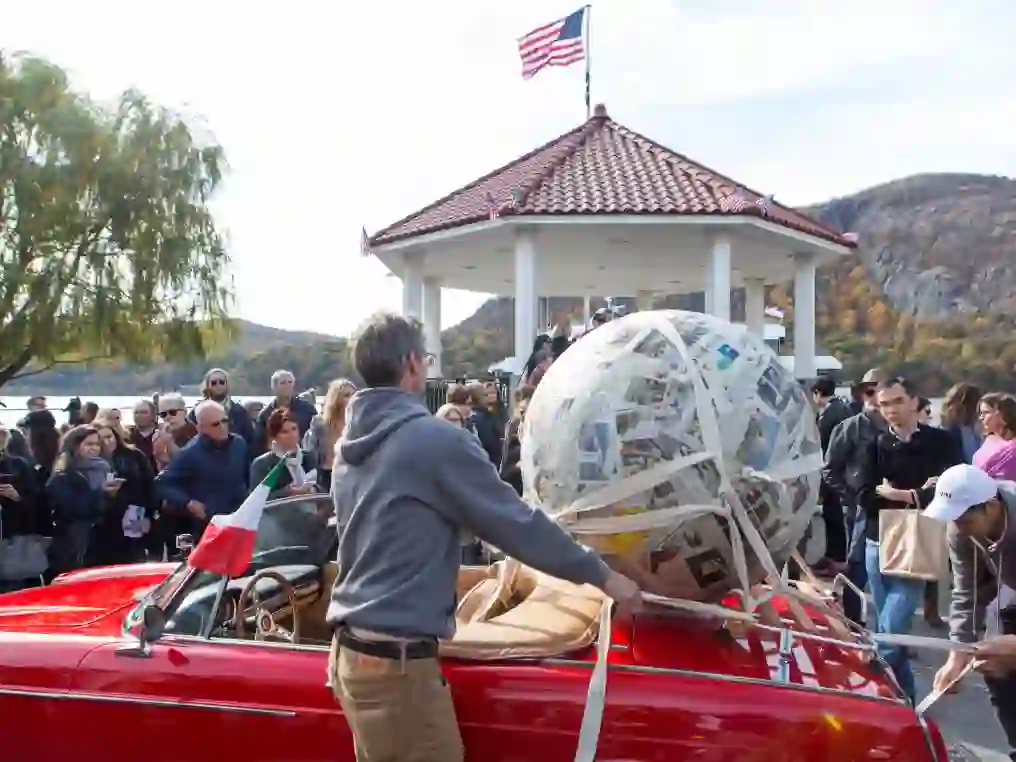
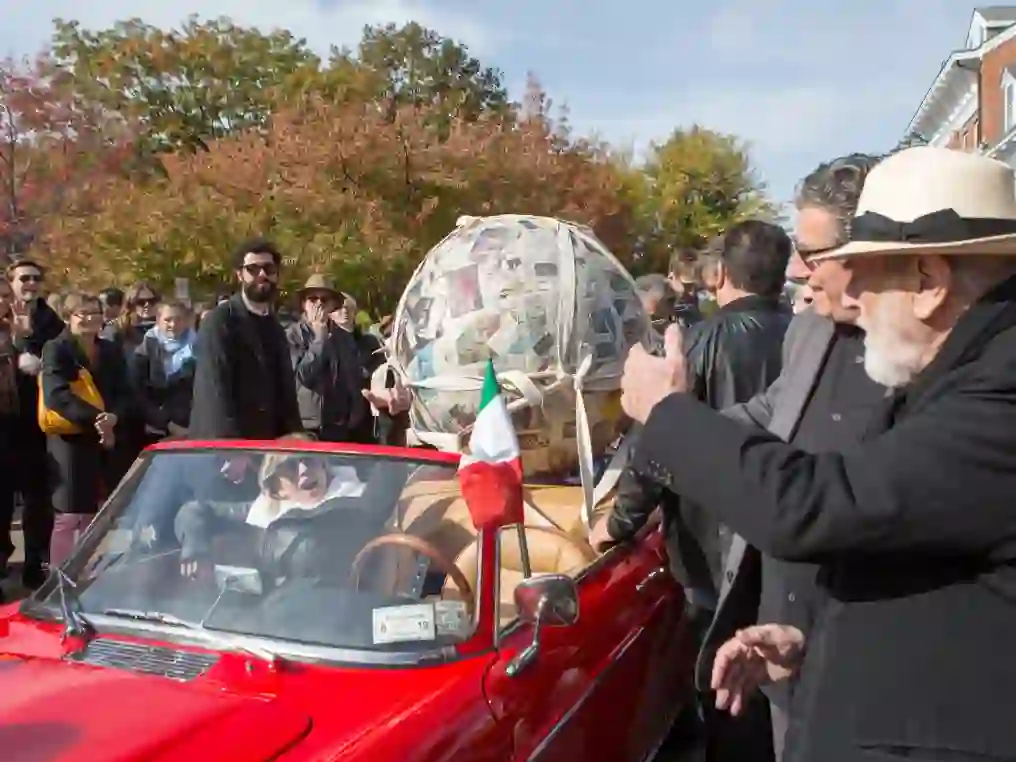
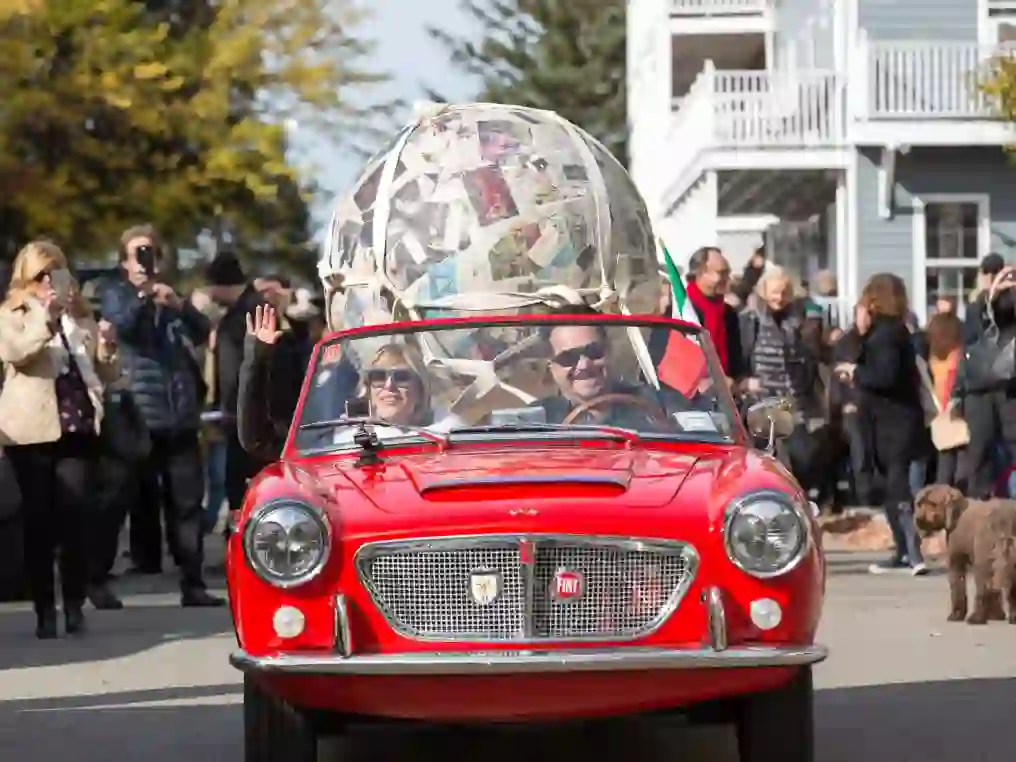
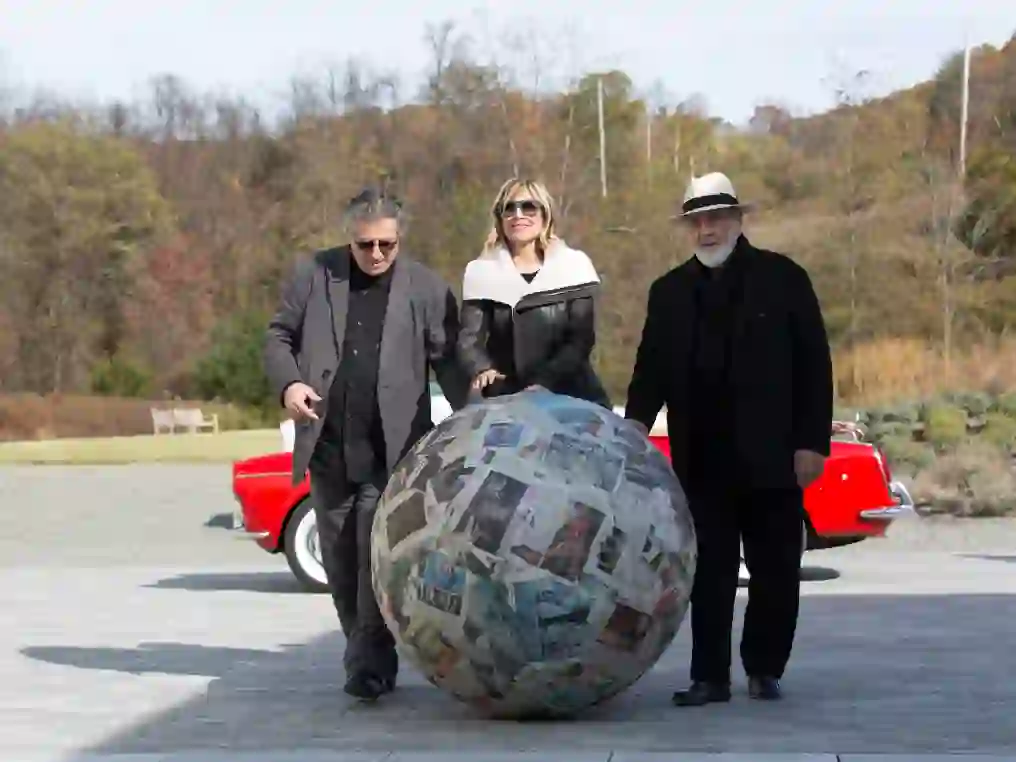
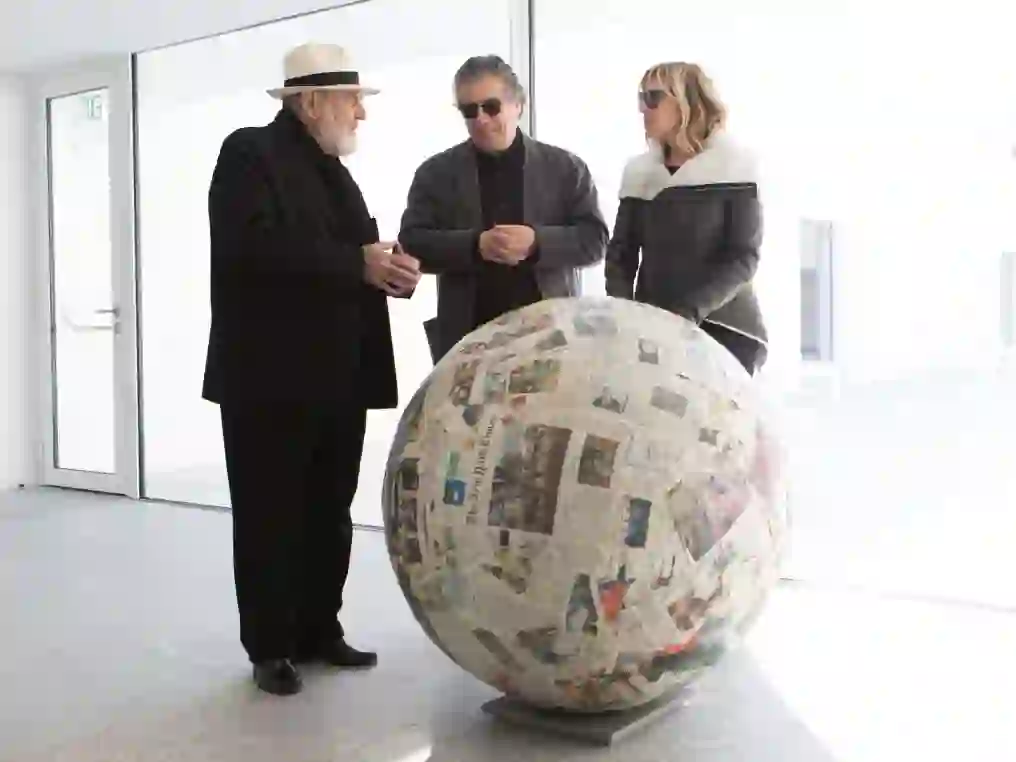
About Michelangelo Pistoletto
Michelangelo Pistoletto was born in Biella in 1933. He began to exhibit his work in 1955, and in 1960 he had his first solo show at Galleria Galatea in Turin. His early work is characterized by an inquiry into self-portraiture. During 1961 and 1962, Pistoletto made his first Mirror Paintings, which directly include the viewer and real-time in the work, and open up perspective, reversing the Renaissance perspective that had been closed by the avant-garde movements of the early twentieth century. These works quickly brought Pistoletto international acclaim, leading, in the sixties, to one-man shows in significant galleries and museums in Europe and the United States. The Mirror Paintings are the foundation of Pistoletto’s subsequent artistic output and theoretical thought.
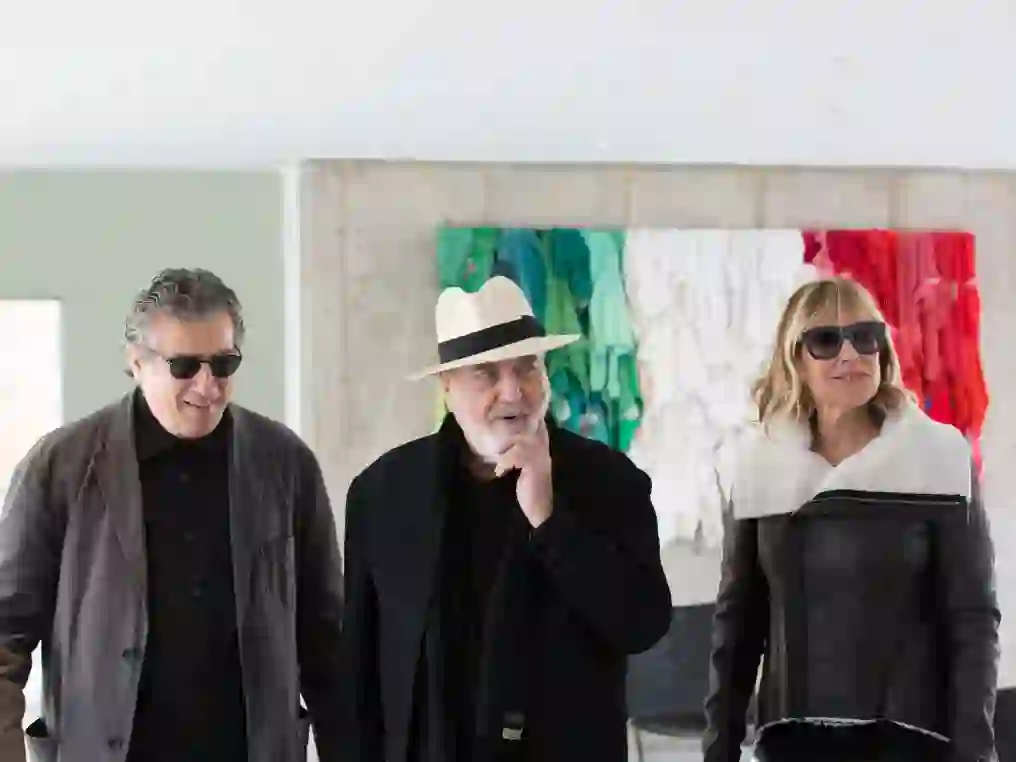
In 1965 and 1966 Pisoletto produced a set of works entitled Minus Objects, considered fundamental to the birth of Arte Povera, an art movement of which Pistoletto was an animating force and a protagonist. In 1967, he began to work outside traditional exhibition spaces with the first instances of “creative collaboration.” He developed this approach over the following decades by bringing together artists from different disciplines and diverse sectors of society. In 1975–76 he presented a cycle of twelve consecutive exhibitions, Le stanze (Rooms), at the Christian Stein Gallery in Turin. This was the first of a series of complex, year-long works called “time continents.” Others were White Year (1989) and Happy Turtle (1992).
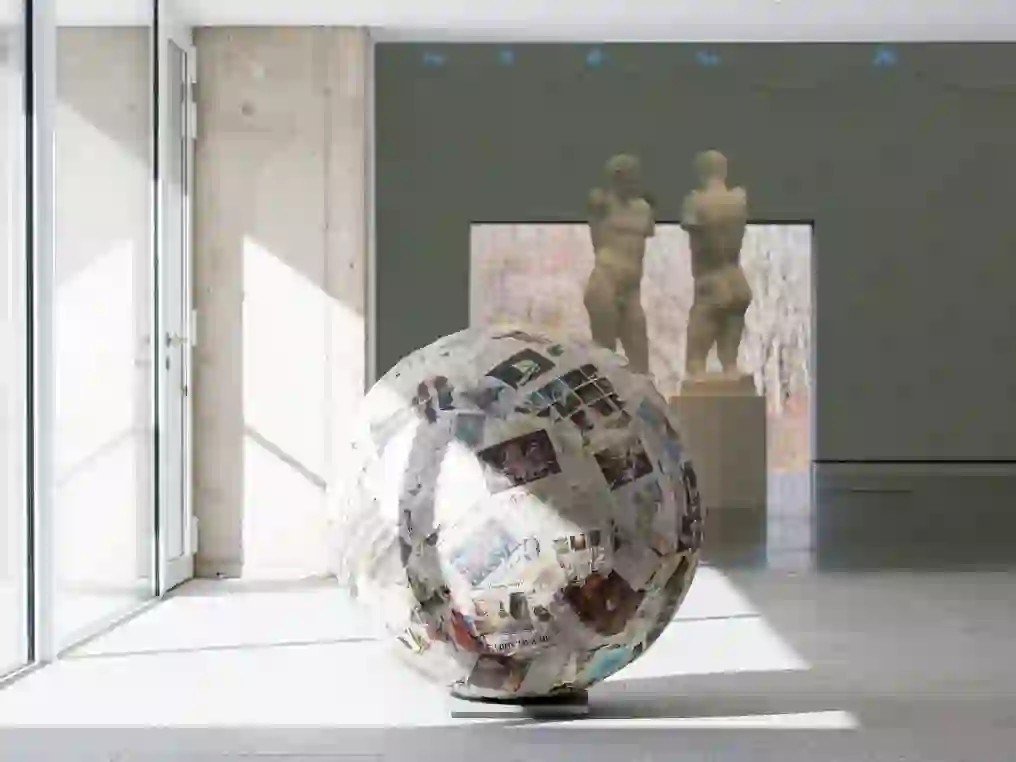
In 1978, in a show in Turin, Pistoletto defined two main directions his future artwork would evoke: Division and Multiplication of the Mirror and Art Takes On Religion. In the early eighties, he made a series of sculptures in rigid polyurethane, translated into marble for his solo show in 1984 at Forte di Belvedere in Florence. From 1985 to 1989 he created the series of “dark” volumes called Art of Squalor.
During the nineties, with Project Art and with the creation of his foundation Cittadellarte- Fondazione Pistoletto in Biella, Italy, as well as with the University of Ideas, Pistoletto took art into active relation with diverse spheres of society with the aim of inspiring and producing responsible social change.
In 2003, he won the Venice Biennale’s Golden Lion for Lifelong Achievement. The following year, the University of Turin awarded him an honorary degree in Political Science. On that occasion, the artist announced what has become the most recent phase of his work, Third Paradise. In 2007, in Jerusalem, he received the Wolf Foundation Prize in the Arts, “for his constantly inventive career as an artist, educator and activist whose restless intelligence has created prescient forms of art that contribute to the fresh understanding of the world.” In 2010, he wrote the essay The Third Paradise, published in Italian, English, French and German. In 2011, he was the artistic director of Evento 2011 – L'art pour une ré-évolution urbaine (Art for an Urban Re-evolution) in Bordeaux. In 2012, he started promoting Rebirth-day, the first worldwide day of rebirth, celebrated every year on December 21, with initiatives taking place all around the world.
In 2013, the Louvre hosted his solo exhibition Michelangelo Pistoletto – Année 1 – le paradis sur terre (Michelangelo Pistoletto: Year 1, Heaven on Earth). That same year, he received the Praemium Imperiale for painting in Tokyo. In 2014, the symbol of the Third Paradise was installed in the hall of the headquarters of the Council of the European Union in Brussels for the period of the Italian Presidency of the European Council. In May 2015, he received an honorary degree from the Universidad de las Artes in Havana. That same year, he realized the large-scale work Rebirth, now located in the park of the Palais des Nations in Geneva, the second largest of the four major office sites of the United Nations.
